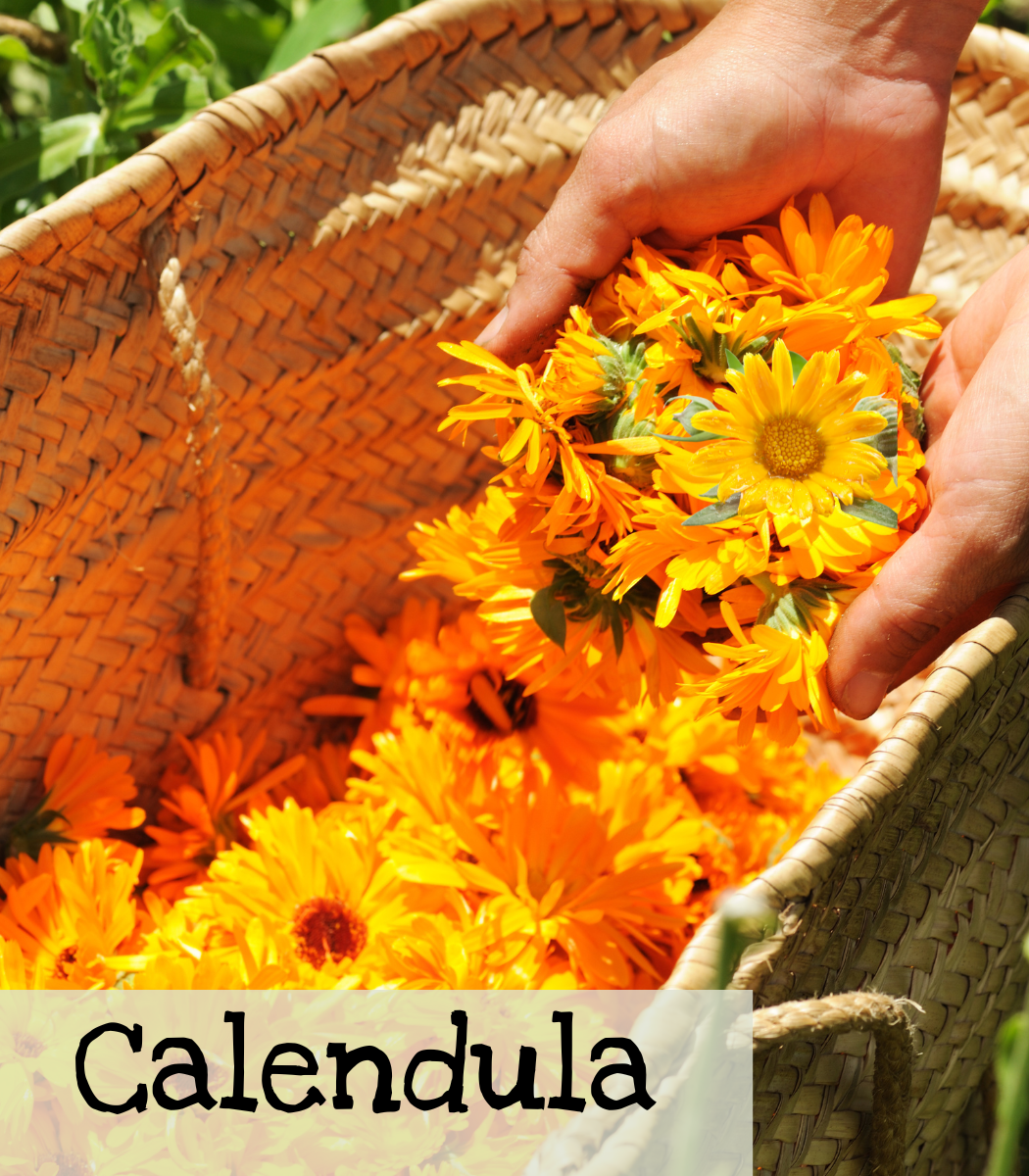
Calendula
Also known as pot marigold, calendula is an edible flower. Although bitter, it is often used as a saffron substitute to color various dishes. Calendula is easy to grow and a prolific bloomer!
|
Playtime Mix |
|
Calendula officinalis |
|
Easy |
|
Easy |
|
3 years if properly stored |
|
Perennial in Zones 9-11 |
|
7-14 days |
|
None |
|
1/2 inch |
|
Yes |
|
8-24” |
|
Needs dark to germinate Full sun |
|
45-65 days (Spring to Fall) |
|
April, May |
|
No |

Growing Tips


When to Start
Spring: Start indoors 3-4 weeks before your last frost date. (First week of April for Jefferson, GA)
Direct sow: After ALL danger of frost has passed. (May 1 for Jefferson, GA)
How to Grow
To start indoors, fill seedling pots or cells with pre-moistened seed starting mix. Sow calendula seeds to a depth of 1/2 inch. They like cool temperatures to germinate (55-60 F) If your grow lights put out a lot of heat, there are a couple of things you can do.
One: as they need cooler temperatures to germinate, wait until after germination before placing them under the grow lights.
Two: either use grow lights that don’t put out as much heat or place the cells or pots further away from the lights until they germinate then move them up higher closer to the lights.
Harden off the seedlings by slowly acclimating them to outdoor temperatures over the course of 7 days about 1 week before transplanting. Space or thin plants 10-16 inches apart.
To direct sow, wait until ALL danger of frost has passed. Then sow to a depth of 1/2 inch into a bed or container that is in full sun. Calendula can be a little slow to germinate sometimes taking 2 weeks.
Care
Calendula likes full sun and rich soil. It prefers a soil pH of 6-7 but can grow in a wide range of soils. It likes moderate moisture and is drought-tolerant once established.
Calendula is often treated as an annual, but it is perennial in zones 9-11. However, even if you must treat it as an annual, it is a good self-sower, so it should return.
Calendula doesn’t like temperatures above 85 F. When temperatures get above this range calendula will stop flowering. Cut them back and water well. When temperatures cool down, it should produce a second bloom.
Leave the blooms on the plant towards the end of the season to allow the plant to go to seed.
Pest Management
It is said that Calendula will repel root-knot nematodes. These microscopic pests live in the soil. When their populations get out of control they can kill plants. They will suck the nutrients direct from the roots. Which as you can imagine is not good for the plants they are feeding on. Calendula is related to the marigold. Both produce a chemical that is repugnant to nematodes and will help repel these pests.
Plant with tomatoes and asparagus as both struggle with root-knot tomatoes.
Calendula attracts aphids. This makes it an ideal trap crop for other crops that struggle with aphids. Discover Trap Cropping and how to use calendula as a trap crop. However, if you want to enjoy the flower, controlling aphids is important. Catching them early is important. Daily check plants looking under the leaves. Aphids can be red, green, brown, black, yellow, or gray. Smoosh them when found. You can also try spraying them off with jets of water. Neem oil should also work, just follow the packaged instructions.
How to use
For arrangements, the flowers can be cut off from slightly opened buds to full-bloomed flowers. To dry, hang upside down in a well-ventilated area out of direct sunlight.
The petals can be used for culinary purposes. Harvest the flowers when they are in full bloom. Dry them by hanging them upside down. Once fully dry remove the petals and discard the rest. Or remove the petals from fresh-cut flowers and lay them on paper towels to dry.
The petals have a slightly salty taste and are often used like saffron. They will also add a pop of color to salads. You can use them to color butter or steep the flowers to make tea.
Store in an air-tight container.
Pro Tip!
Grows well with: Tomatoes and Carrots
Seed Saving

Isolation Distance
Different varieties of calendula should be isolated by 1/4 mile or cage plants. You can also hand-pollinate blooms and bag them to ensure purity.
Instructions
Seeds carry the traits of the parent plant, so select healthy, robust plants free of any signs of disease or insect infestation for seeds. Only choose plants that exhibit the traits you wish to preserve, like color, shape, bloom size, and how early or late they bloomed.
Cover the seed head with a fine-mesh bag as soon as the flower petals shrivel and die and secure the bag in place. This prevents seeds from spilling onto the soil before harvest.
When the heads turn dry and brown, clip the flower head from the main stem once the seeds are dry and dark. Or wait until the seed head bursts. Separate plant debris from the seeds by removing the mesh bag and placing the flower head in a paper bag and shaking to loosen the seeds. Seeds will settle to the bottom of the bag. Remove any plant debris by hand.
Features
- Said to repel pests in the garden: good for planting with vegetables to help control pests.
- Good for beds, boarders, and containers.
- Drought tolerant
- Container friendly
- Pollinator friendly
- Deer resistant
- Rabbit resistant
- Playtime Mix: Heirloom. Has warm tones of creamy pastels to bright orange and bronze. The booms range from single to double.

It is said, that they are a good companion plant for tomatoes it is supposed to repel nematodes.
Sources:
Burpee.com
Rareseeds.com
